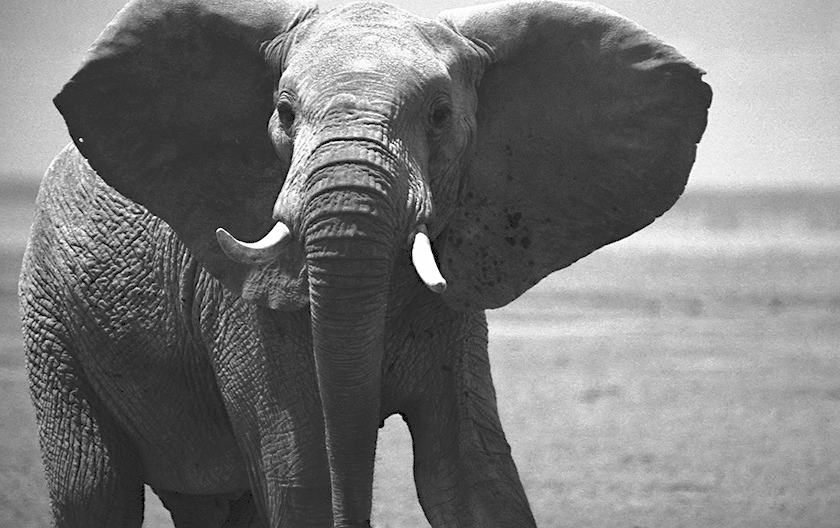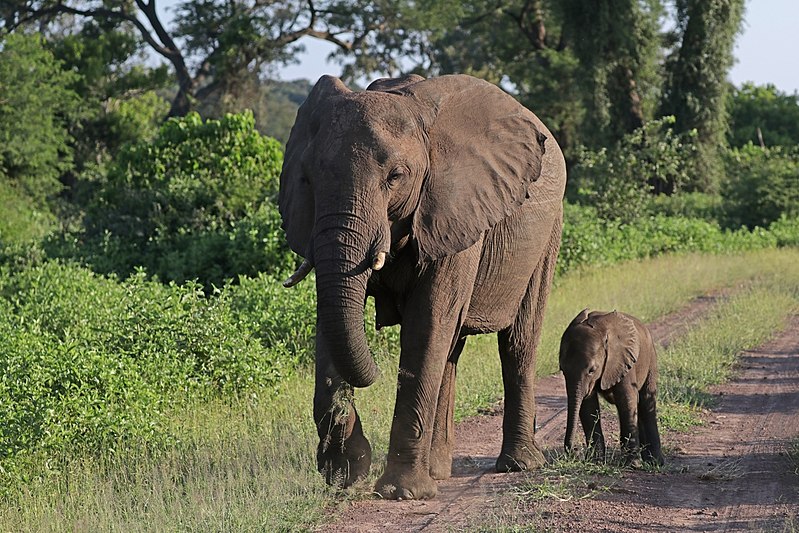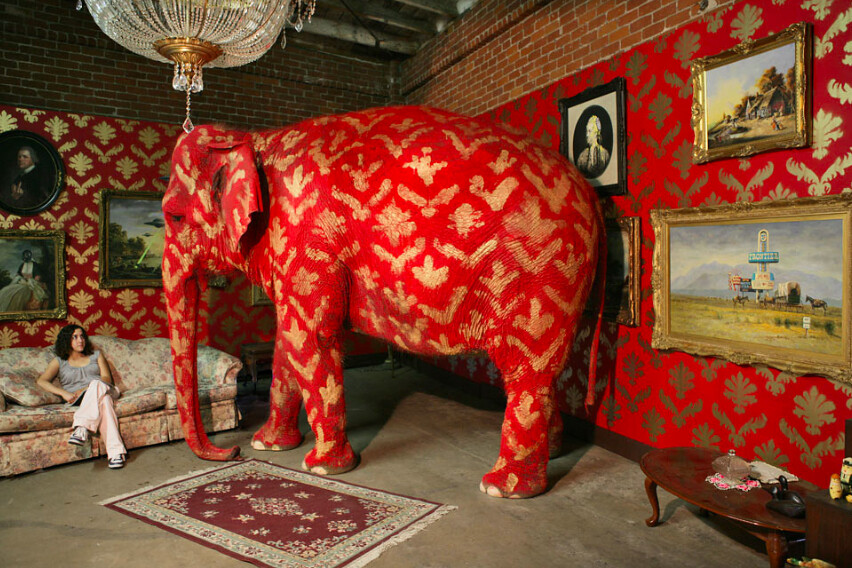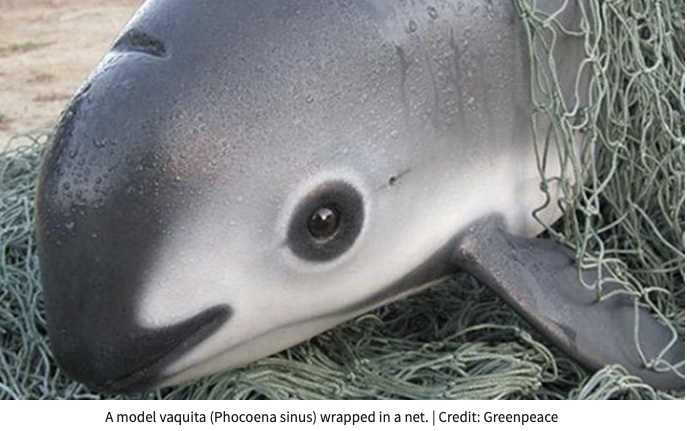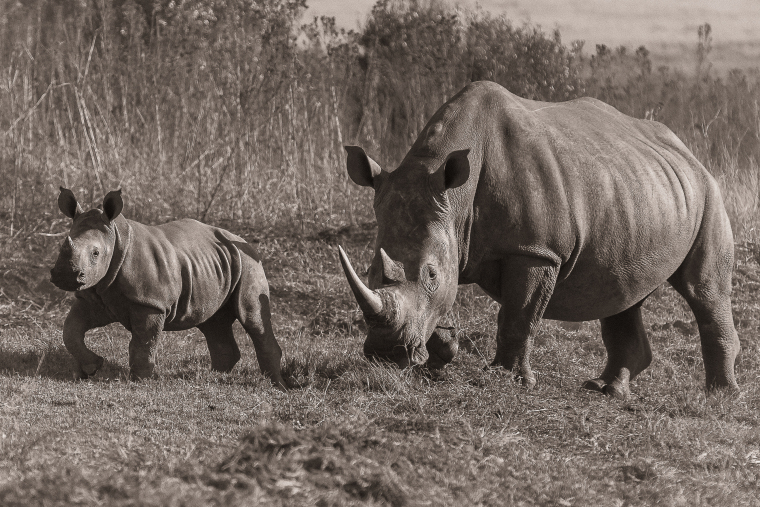If It Pays It Stays. This pecuniary logic appears to be what passes for conservation these days in some circles. At CITES CoP18 we have seen this specious form of argument, so to speak, with calls by some countries and certain enterprising individuals to increasingly legalize international trade in rhino horn and elephant ivory. The plan apparently is to substitute bankers, businessmen, and bureaucrats for bandits and black marketeers – the main difference between these suspect groups being the veneer of law. But which of them, do you think, is actually the most dangerous?
The only way to save the rhino and the elephant, more people are now saying, is to monetize the animal, commodify it, farm it, trade it, turn it into a corporate profit center, a globally traded “product” like any other.
Can we save an endangered species by making money off it?
Those advocating for the creation of a legally sanctioned global market for horn and ivory say nothing else has worked to stem the poaching crisis so why not try it. That form of logic can apply to any tactic that hasn’t been tried yet. So why is this particular tactic – trading horn and ivory to a greater extent than is already occurring – supposed to work? Where’s the actual evidence?
I say those advocating for new forms of trade should have the burden of providing evidence that an increased global trade, above and beyond current levels, would actually save the species in the wild. Is there a prior example of a wild animal that has been brought back from the brink of extinction by creating a legal global market for parts of its body? Has someone ever created a market for “farmed” or “alternatively sourced” parts on top of an already existing black market, with success (for the species, not the traders)?
The fact is that a legalized market for farmed rhino horn or “alternatively sourced” elephant ivory (government stockpiles for example) would introduce such “products” to billions of potential consumers around the world who know nothing of where the “product” comes from. Once stimulated this global “demand” (in the language of economics the irrational or even grotesque desire to possess these items is given the banal term “demand”) has the potential to vastly overwhelm the “supply” (meaning whatever animals are to be farmed for their parts plus the remnant wild populations already under siege by poachers, i.e. the current “suppliers.”)
Even the simple act of applying the language of global commerce – “demand” and “supply” – to wild animals seems to pervert the true intent and spirit of conservation, which is to conserve some of the beauty, wonder, and wildness of the world the way it was before homo sapiens got their grubby paws (and financial calculators) on it.
And speaking of grubbiness – how exactly are the world’s governments, already corrupted in countless ways, supposed to police the margins between the black-market and the supposedly legitimate market for horn and ivory, especially when there are millions and billions of dollars changing hands, pouring more fuel on the fires of corruption?
And are we really to believe that the profits from this new trade will eventually “trickle down” to the local communities?
The problem goes even deeper. It is fundamental. I’m reminded of a quote by the historian Michael Parenti which captures the point: the essence of the global economy, he says, is to “turn nature into commodities and commodities into capital. The live green earth is transformed into dead gold bricks, with luxury items for the few and toxic slag heaps for the many.”
Yes, here is what’s most likely to happen if the world turns its endangered and threatened species into globally traded commodities: the language and logic of the global economy will be misapplied to creatures which are not units of production but are wild beings; those wild beings and their progeny will consequently over time be degraded to the status of “ecosystem service providers,” i.e. little more than livestock (living “stock”) with horns or tusks; a few people will make lots of money; the profits will stay at the top, as they always do, and never trickle down the “local communities” as always promised but never delivered; the global black market for illegally poached “products” will still operate in tandem with the legal market; a whetted appetite (I mean “demand”) for these products will outstrip supply; and in the end, after all that . . . we still have no idea if the species will survive in the wild.
But that’s sort of the point, isn’t it? To those profiting from trade, survival in the wild is irrelevant to the bottom line. The “wildness” of a species – and our world – is superfluous.
I can see it now, the brave new world of cutting-edge conservation: farmed rhinos and elephants crammed cheek to jowl into cramped Chinese feedlots. “Harvesting” quotas. Shareholder meetings. Quarterly targets. Executive bonuses. Horn & Ivory Inc.
The truth is that monetizing an endangered species is not primarily about conserving the species. It’s first and foremost about Money.
In other words, the Money to be generated is certain but the benefits for the species are uncertain. Those who make it – Money – off hawking the parts of rhino and elephants will certainly walk away with their profits. And you can be sure they won’t pay a price if and when their commercial schemes don’t pan out as advertised for the species. They won’t have to give the profits back. And they won’t have to apologize, either. It will always be easier to deflect, distract, shift the blame … and keep the loot.
In short, It Pays, But Does It Stay? Maybe, maybe not. Not my problem.
For now, such commercial schemes have been kept at bay for a little while longer. The parties at CITES CoP18 thankfully rejected the major proposals to expand trade in horn and ivory. Let’s hope this is more than a temporary reprieve, and that these bad ideas don’t gain momentum for CoP19.
We need to get this straight. The endangered and threatened species of our planet in peril are not profit centers for the business world to tap into. They must stay, period. They must live. Whether they “Pay” or not.
Anything less can be called Commerce, Commodification, Corruption, Cronyism, even good ol’ fashioned Capitalism . . . but not Conservation.
W. Aaron Vandiver, WildiZe Foundation
